Service Innovation
Mar 02, 2024
By Ari Manor , CEO at ZOOZ

This is one in a series of articles that provide detailed and updated information about Innovation. In this specific article, which focuses on Service Innovation, you can read about:
- New Service Development
- Product Innovation VS Service Innovation
- Innovations at Body Shop
- Innovations in Dentistry
- Innovation in Insurance
- Innovation at Aetna
- Innovations at Boots
- Innovations in Health
- Innovation at School
For additional articles about Innovation, see the Topic Menu.

New Service Development
In a world where service-based economies are rapidly expanding, New Service Development (NSD) has become crucial for businesses seeking growth and differentiation. NSD involves introducing new service offerings or significantly improving existing services. This process is marked by its own set of complexities, as services are intangible, making their development and evaluation a nuanced endeavor.
Key Phases in New Service Development
- Service Strategy Development: Aligning the new service with the company's overall strategic objectives is vital.
- For example, Netflix's venture into streaming services was a strategic move that capitalized on changing consumer behaviors, resulting in over 200 million subscribers as of 2021.
- For example, Netflix's venture into streaming services was a strategic move that capitalized on changing consumer behaviors, resulting in over 200 million subscribers as of 2021.
- Service Design and Testing: Designing the service blueprint and testing it to ensure feasibility and customer value.
- Starbucks constantly designs and tests its café experiences, focusing on ambiance, efficiency, and customer engagement. By doing so, it contributes to its global brand loyalty and recognition.
 Case Study: Service Blueprints at Ritz-Carlton
Case Study: Service Blueprints at Ritz-Carlton- Organization: The Ritz-Carlton's Gold Standard Services (Implementation ongoing since the early 1990s)
- What Was Done: The Ritz-Carlton implemented "service blueprints" as a strategic tool to map out every aspect of the guest experience, from pre-arrival to post-departure. This detailed mapping allowed the company to identify critical service interactions and opportunities for personalization, ensuring that every guest encounter upheld the brand's gold standard of service. The service blueprints detailed not only the direct interactions between staff and guests but also the behind-the-scenes processes that support those experiences.
- Results/Impact: The adoption of service blueprints significantly contributed to The Ritz-Carlton's reputation for exceptional service quality, culminating in the brand earning two Malcolm Baldrige National Quality Awards. By thoroughly designing and consistently delivering exceptional service experiences, The Ritz-Carlton not only enhanced customer satisfaction and loyalty but also set a benchmark in the luxury hospitality industry. The brand's commitment to service excellence, supported by the systematic use of service blueprints, solidified its status as a leader in creating memorable and personalized guest experiences.
- Service Analysis: This involves assessing the service's business potential and market fit.
- o FedEx continuously analyzes delivery routes and customer data, optimizing their service offerings to handle an average of 3.4 million shipments each business day.
- o FedEx continuously analyzes delivery routes and customer data, optimizing their service offerings to handle an average of 3.4 million shipments each business day.
- Market Testing: Similar to product testing but focused on customer experience and satisfaction.
- For instance, Airbnb often pilots new service features, like "Experiences", in select markets, gauging customer response before a wider rollout.
- For instance, Airbnb often pilots new service features, like "Experiences", in select markets, gauging customer response before a wider rollout.
- Commercialization and Launch: Similar to product testing but focused on customer experience and satisfaction.
- OpenAI launched GPT-3 in June 2020, surpassing 1 Million users in just 5 days, and gaining 57 million users in its first month, demonstrating rapid and successful service commercialization.
- OpenAI launched GPT-3 in June 2020, surpassing 1 Million users in just 5 days, and gaining 57 million users in its first month, demonstrating rapid and successful service commercialization.
- Post-Launch Service Monitoring: Evaluating the service performance and making necessary adjustments.
- Spotify’s “Release Radar” is a result of continuous post-launch monitoring, offering personalized playlists that improve customer retention.
 Case Study: LegalZoom – Subscription-based Legal Plan
Case Study: LegalZoom – Subscription-based Legal Plan- Service: Subscription-based Legal Plan by LegalZoom (Launched 2011)
- What Was Done: LegalZoom, based in Glendale, California, USA, and known for providing online legal documents, developed a subscription-based service offering ongoing legal advice for a monthly fee. The service connects subscribers with licensed attorneys for consultations on new legal matters, contract reviews, and legal advice.
- Results/Impact: TLegalZoom's Legal Plan has made legal services more accessible and affordable for small businesses and individuals, disrupting the traditional model of legal consultations and billing. It has provided an avenue for startups and small businesses to obtain legal services that were previously cost-prohibitive.
Components that Drive Successful New Service Development
- Customer Involvement: Integrating customer feedback early and often throughout the NSD process.
- Zappos, with its 365-day return policy and emphasis on customer service, has maintained high customer loyalty and satisfaction rates.
 Case Study: Eat Your Cake! - Chef Services Tailored to Dietary Needs
Case Study: Eat Your Cake! - Chef Services Tailored to Dietary Needs- Organization: Eat Your Cake!, Vancouver, Canada (launched at 2015)
- What Was Done: Eat Your Cake! developed a personalized chef service that creates and delivers meal plans based on individual dietary needs and preferences. This service includes nutrition consultation, customized meal planning, grocery shopping, in-home meal preparation, and kitchen cleanup.
- Results/Impact: The service has garnered a dedicated customer base, particularly among health-conscious individuals and those with specific dietary restrictions. It has also expanded its offerings to include corporate wellness programs, thereby broadening its market reach and impact.
- Employee Training: Ensuring that staff are equipped to deliver the new service effectively.
- Starbucks invests heavily in employee training, which has led to consistent service quality across its 32,000 stores worldwide.
- Technology Utilization: Leveraging technology to enhance the service experience.
- Domino's Pizza's use of tech for services like GPS tracking has led to a significant increase in delivery sales, contributing to a 21% U.S. sales growth in Q3 2020.
- Service Differentiation: Offering something unique that sets the service apart.
- Uber’s entry into the ride-sharing market disrupted traditional taxi services by offering convenience and pricing transparency.
 Case Study: Hertz CLEAR - Streamlining Car Rentals with Mobile Technology
Case Study: Hertz CLEAR - Streamlining Car Rentals with Mobile Technology- Service: CLEAR technology by Hertz (Implemented in 2019)
- What Was Done: Hertz introduced the Hertz Fast Lane powered by CLEAR, which uses biometrics to speed up the car rental process. By integrating CLEAR's technology, customers can now bypass the counter and pick up their rental car through a seamless identity verification process using facial recognition or fingerprint scanning
- Results/Impact: The service has significantly reduced the time it takes for customers to get on the road, enhancing customer satisfaction. It has also positioned Hertz as an innovator in the car rental industry, utilizing technology to improve efficiency and user experience
- Scalability and Flexibility: Designing services that can grow and adapt.
- Scalability is a major screening criterion for new concepts at Google. Local teams, including those we had the pleasure of working with on regional marketing plans, focus on developing and testing concepts that have the potential to scale and succeed globally.
 Case Study: Zipcar - Car Sharing
Case Study: Zipcar - Car Sharing- Service: Car-sharing by Zipcar, Cambridge, Massachusetts, USA (Launched 2000)
- What Was Done: Zipcar introduced a car-sharing service that allows members to rent cars by the hour or day. The service is accessible via an app, which handles the entire process, from vehicle selection to unlocking the car. Zipcar positioned its service as an alternative to traditional car ownership or rental.
- Results/Impact: Zipcar's service has reshaped urban mobility and is considered a pioneer of the sharing economy. It has expanded to numerous cities and countries, offering an eco-friendly transportation alternative and reducing the need for personal vehicle ownership.
Quantitative Impact of Effective New Service Development (NSD)
- The quantifiable impact of effective NSD is clear. Companies like Amazon and Netflix have seen their market capitalization soar as they’ve innovated in service offerings
- For instance, Netflix's investment in original content has led to a reported 31% increase in annual revenue from 2019 to 2020.
- On a smaller scale, innovative service models like Rent the Runway have disrupted retail by offering a subscription-based clothing rental service, hitting nearly $157 million in revenue in 2019 before the pandemic.
NSD is about crafting experiences and solutions that resonate with consumers. It's a process that requires meticulous planning, customer insight, and the agility to adapt to feedback and changing market conditions. As services become increasingly central to global economies, the ability to innovate in service offerings will become a primary differentiator and driver of success for businesses worldwide
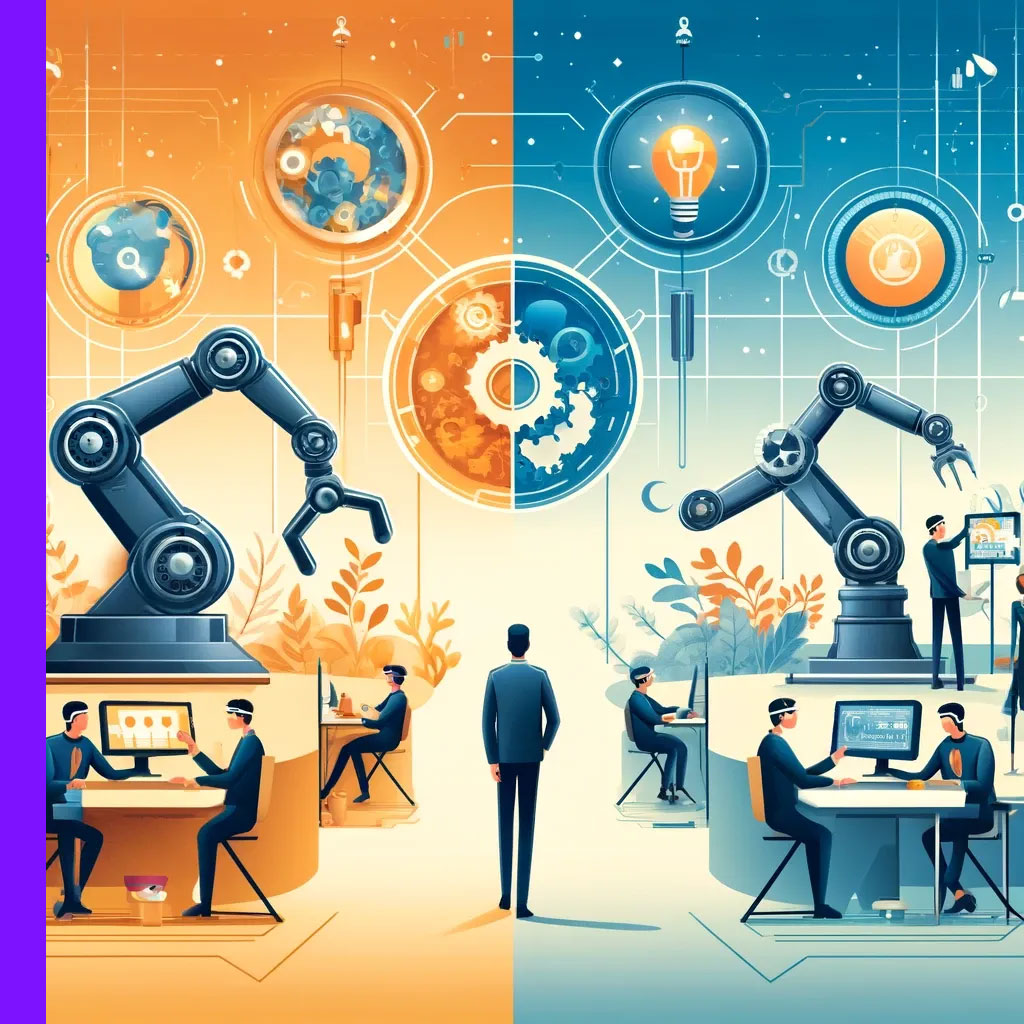
Product Innovation VS Service Innovation
The business landscape is characterized by two primary forms of innovation: product innovation and service innovation. Both are critical to economic growth and competitiveness, but they diverge in approach, execution, and the nature of their outputs.
Comparative Analysis of Product and Service Innovation
- Tangibility: Product innovation results in tangible offerings—physical goods that consumers can touch and own. Service innovation, on the other hand, is intangible, often experienced as a utility or activity.
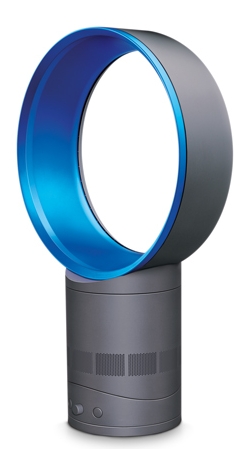 Case Study: Dyson's Air Multiplier – Bladeless fans
Case Study: Dyson's Air Multiplier – Bladeless fans- Product: Air Multiplier by Dyson Ltd, Malmesbury, England, UK (Introduced 2009)
- What Was Done: Dyson revolutionized the fan market with its Air Multiplier technology. By removing the blades traditionally used in fans, Dyson created a product that was safer, quieter, and more energy-efficient, using an annular aperture to draw in air and amplify it.
- Results/Impact: The bladeless fan was not just a new product but a significant innovation in its category. It set new standards for safety and design aesthetics in home appliances and allowed Dyson to command a premium price, thus impacting the market with a distinctive value proposition.
- Customer Interaction: Products are typically developed and then marketed to customers, whereas service innovation often involves the customer in the development process itself, as the feedback loop is immediate and can directly influence the service improvement.
- Speed of Implementation: Product innovation can have longer development cycles due to manufacturing and distribution requirements. Services, by contrast, can often be innovated more rapidly due to the direct nature of delivery.
- Protection and Scale: Product innovations can be patented, protecting the innovation and potentially creating a monopoly. Service innovations are harder to protect and are often quickly imitated, which can drive rapid industry-wide improvements.
- Measurement of Success: The success of product innovation can be measured in sales, market share, and product lifecycle. Service innovation is often evaluated on customer satisfaction, retention rates, and the efficiency of service delivery.
 Case Study: Spotify's Streaming Service
Case Study: Spotify's Streaming Service- Service Mix: Music Streaming by Spotify AB, Stockholm, Sweden (Launched 2008)
- What Was Done: Spotify introduced a music streaming service that allowed users to listen to music on-demand, create playlists, and discover new music through an internet connection, without the need to purchase or download individual tracks or albums.
- Results/Impact: Spotify's service innovation reshaped the music industry, transitioning the revenue model from unit sales to subscriptions and advertising. It has grown to become one of the largest streaming platforms, influencing how music is distributed, monetized, and consumed globally.
Examples Demonstrating the Dichotomy
- Product - Apple Inc.: Apple's launch of the iPhone revolutionized the mobile phone market with its touch screen technology and app ecosystem, with over 217 million iPhones sold in 2018 alone.
- Service - Uber: Uber's innovation in creating a ride-hailing service that leverages technology to connect drivers with passengers disrupted the transportation industry, with 5 billion trips completed in 2017.
- Comparison: The comparison between Apple's sale of 217 million iPhones in 2018 and Uber's completion of 5 billion (= 5,000 Million) trips in 2017 illustrates the potential for online service platforms to scale and reach a wider audience more rapidly than physical products. In other words, Uber provided 23 times more trips (services) in one year compared to iPhone sales (products), achieving this a year before Apple sold 217 million iPhones. This disparity underscores how digital services, like Uber's app-based ride-hailing, can achieve exponential growth and widespread adoption at a pace that physical goods, even those as popular as the iPhone, cannot match.
Key Strategies for Successful Innovation in Both Domains
- Understanding Market Needs: Whether developing a product or a service, successful innovation begins with a deep understanding of market needs and consumer pain points.
- Leveraging Technology: The integration of advanced technology can lead to breakthrough innovations in both products and services, as seen with Tesla's electric vehicles or Zoom's video conferencing services during the pandemic.
- Building a Strong Brand: A strong brand can enhance both product and service innovations, particularly in B2C (Business to Consumer) brands, creating an emotional connection with consumers and differentiating from competitors.
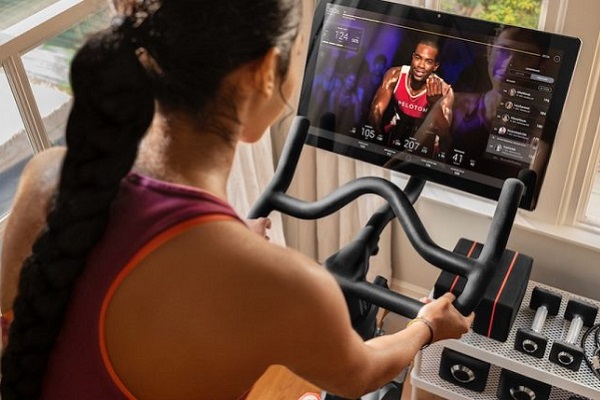 Case Study: Peloton - Interactive Fitness
Case Study: Peloton - Interactive Fitness
- Solution: Integrated Fitness Experience by Peloton, New York, USA (Launched 2012)
- Product-Service Mix: Peloton combines high-quality exercise equipment (stationary bicycles and treadmills) with an integrated digital streaming service (on-demand fitness classes). This special mix allows users to participate in live and on-demand fitness classes from the comfort of their homes.
- What Was Done: Peloton launched its innovative product-service mix by introducing a stationary exercise bike equipped with a screen that streams live and on-demand fitness classes. Members pay a monthly subscription fee to access a wide range of classes, including cycling, running, yoga, and more. The platform encourages community engagement through features like leaderboards and real-time performance tracking.
- Results/Impact: Peloton's approach has revolutionized home fitness, making it a successful case of launching a combined product and service. It has not only sold millions of bikes and treadmills but also built a loyal community of users. Peloton's success lies in its ability to merge high-quality, durable physical products with an engaging and diverse content library, thereby creating a comprehensive and immersive fitness experience. This unique combination has led to significant growth in subscribers and revenue, establishing Peloton as a leader in the fitness industry and a pioneer in the integrated product-service model.
Quantitative Impacts
- Product Impact: Tesla's innovation in electric vehicles has not only disrupted the automotive industry but also led to a staggering market cap. “By April 2021, Tesla had become the most valuable car manufacturer globally, surpassing traditional giants such as Toyota and Volkswagen. Its market capitalization exceeded $800 billion, underscoring the industry's recognition of Tesla's pioneering efforts in electric vehicle technology.”
- Service Impact: Netflix’s shift from DVD rentals to streaming services has yielded over 203 million subscribers by the end of 2020, reflecting the massive impact of service innovation on growth and market dominance. This exponential subscriber growth has significantly contributed to Netflix's revenue, which soared to over $25 billion in 2020, demonstrating the financial success and market penetration achieved through its streaming service model
In essence, both product and service innovations are vital for businesses to thrive. Product innovation focuses on creating new or improved goods, while service innovation enhances the way services are conceived, delivered, and consumed. Each requires a unique set of strategies, processes, and measurements of success, and businesses often find that a balanced focus on both can lead to greater innovation, customer loyalty, and long-term profitability.
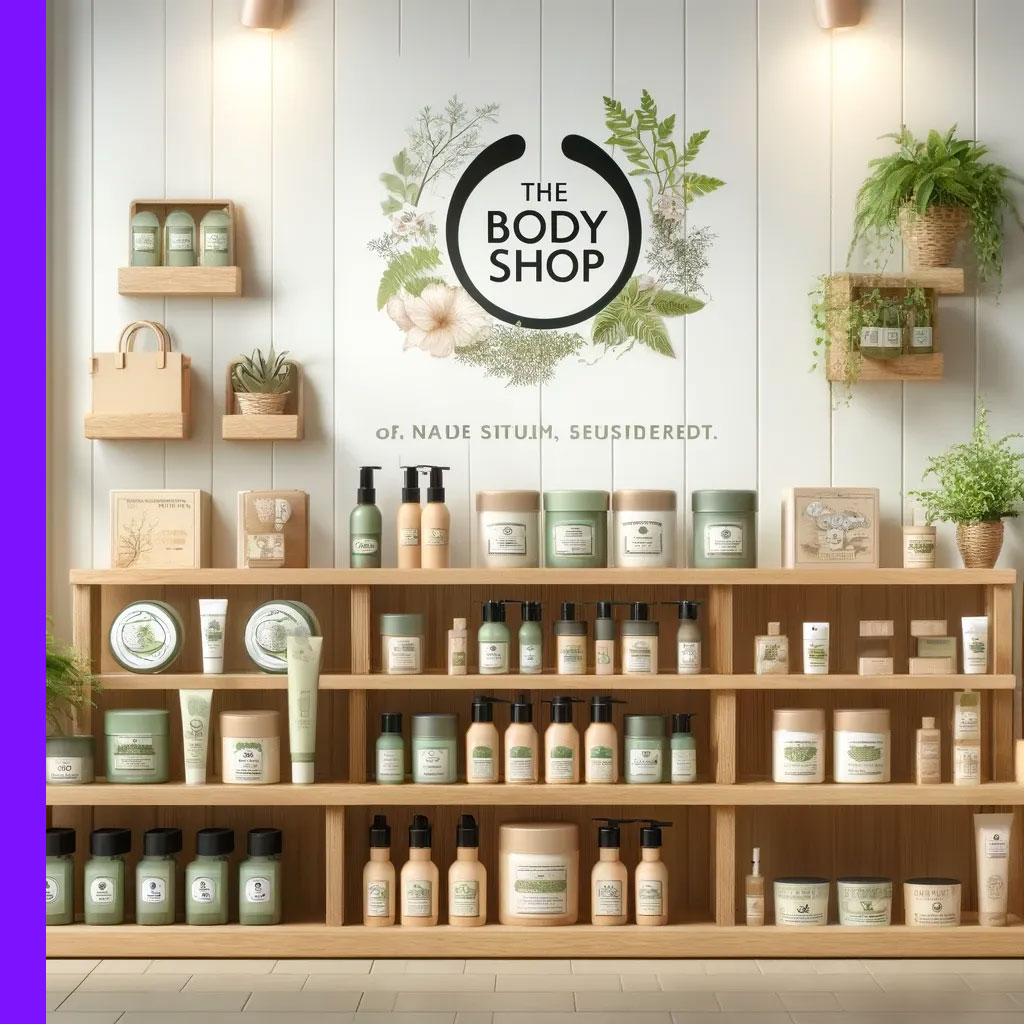
Innovations at Body Shop
The Body Shop, founded by Anita Roddick in 1976, has long been synonymous with not just beauty and skincare products but also with pioneering ethical business practices and innovation. From its inception, The Body Shop has demonstrated that a company can be both profitable and socially responsible, challenging the norms within the cosmetics industry.
Innovative Practices and Products by The Body Shop
- Against Animal Testing: The Body Shop was one of the first global cosmetics brands to campaign against animal testing, leading to an innovative range of cruelty-free products. This stance not only set new industry standards but also led to the EU ban on animal testing for cosmetics in 2013.
- Community Fair Trade Program: Launched in 1987, this program was groundbreaking, ensuring fair prices and sustainable livelihoods for suppliers in exchange for ingredients and accessories from around the world. This initiative has benefited over 25,000 people in 21 countries, showcasing how ethical sourcing can be integrated into business models.
- Recycling and Refill Programs: The Body Shop introduced a pioneering recycling scheme, encouraging customers to return empty product containers for recycling. The recent relaunch of its refill program across stores globally aims to reduce plastic use significantly, demonstrating an ongoing commitment to innovative environmental solutions.
- Bio-Bridges: The Body Shop's Bio-Bridges program aims to regenerate wildlife corridors to enable endangered species to reconnect and breed, showing an innovative approach to conservation. This initiative highlights how businesses can contribute to biodiversity and environmental protection.
- Hemp-Based Products: Recognizing the sustainability and versatility of hemp, The Body Shop was one of the first to develop a range of hemp-based skincare products, catering to the needs of very dry skin. This not only utilized a less common ingredient but also tapped into the growing demand for natural and sustainable beauty products.
Expanding the Boundaries of Beauty and Ethics
- Packaging Innovation: The Body Shop has experimented with various sustainable packaging solutions, including using recycled plastic and introducing refill stations in stores to minimize waste.
- Advocacy and Campaigning: Beyond products, The Body Shop has used its platform for advocacy, campaigning on issues from domestic violence to climate change, engaging customers in social and environmental causes.
 Functional Cosmetics: The Body Shop revolutionized the cosmetics industry by focusing on the functionality and ethical sourcing of its products, stripping away the glamour and hype typically associated with cosmetics advertising. This approach, highlighted in the book “Blue Ocean Strategy,” differentiated the brand by offering straightforward, effective products like a soap labeled simply as "soap," appealing to consumers seeking authenticity and environmental responsibility.
Functional Cosmetics: The Body Shop revolutionized the cosmetics industry by focusing on the functionality and ethical sourcing of its products, stripping away the glamour and hype typically associated with cosmetics advertising. This approach, highlighted in the book “Blue Ocean Strategy,” differentiated the brand by offering straightforward, effective products like a soap labeled simply as "soap," appealing to consumers seeking authenticity and environmental responsibility.
The Body Shop's journey underscores the potential of innovation rooted in ethical convictions and social responsibility. By integrating these values into every aspect of its operations, from product development to supply chain management, The Body Shop has not only carved a niche for itself in the cosmetics industry but also led the way in demonstrating how business can be a force for good. As the brand continues to evolve, its legacy of innovation serves as a reminder that true beauty lies in making a positive impact on the world.

Innovations in Dentistry
Dentistry has witnessed significant innovations that have transformed patient care, making treatments more efficient, less invasive, and more comfortable and affordable. These advancements stem from a deep understanding of oral health challenges and a commitment to improving patient outcomes through technology and materials science.
Key Innovations Transforming Dentistry
- Digital and 3D Imaging: Advanced imaging techniques, such as Cone Beam Computed Tomography (CBCT), provide dentists with 3D views of the mouth, significantly improving diagnosis, treatment planning, and the precision of procedures like implant placement.
Case Study: CT Dent - Pioneering Dental Imaging
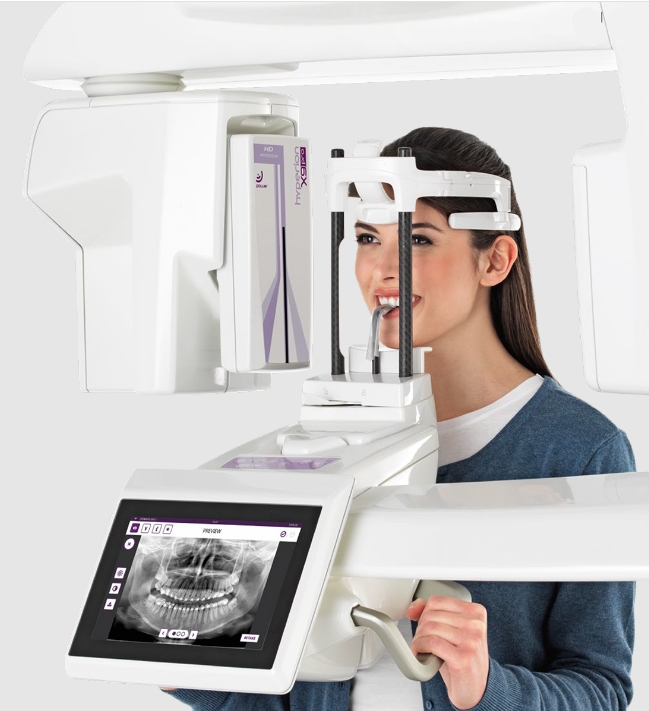
- Company: CT Dent Ltd, Or-Yehuda, Israel (Founded in 1995)
- What Was Done: CT Dent Ltd, operating under the brand name CTdent in Israel, opened its first Dental Imaging center in Holon, Israel, then rapidly expanded, opening 25 centers nationwide to meet the growing demand for high-quality dental imaging. This expansion was fueled by Israel's leading role in dental implant procedures, driving the need for advanced 3D CBCT imaging technology. CTdent's commitment to service excellence, value for money, and state-of-the-art technology set it apart in a highly competitive market.
- Results/Impact: Today, CT Dent serves approximately 3,000 dentists and 400,000 patients in Israel, providing over a million dental imaging scans. This success is a testament to the company's unmatched experience and know-how. Israel's high rate of dental implant procedures and the competitive landscape have significantly influenced CTdent's operations, leading to the development of innovative solutions such as the first-ever dental-PACS and Human+AI Radiology reports. The company's innovative spirit and adaptability have made it a leader in dental imaging, not just in Israel but globally, with expansions into the UK and five additional countries.
- CAD/CAM Technology: Computer-Aided Design and Computer-Aided Manufacturing (CAD/CAM) technology has revolutionized dental restorations, allowing for the design and fabrication of dental restorations in a single visit, reducing the need for multiple appointments and temporary crowns.
- Laser Dentistry: Lasers are used for a variety of dental procedures, including cavity detection, gum disease treatment, and tooth whitening. Laser treatments are often less painful and may reduce healing time.
- Invisalign and Clear Aligners: Innovations in orthodontics, such as Invisalign, have made straightening teeth less visible and more comfortable than traditional braces. These clear aligners are custom-made using 3D printing technology, offering a discreet option for improving dental alignment.
 Case Study: Invisalign: Revolutionizing Orthodontics
Case Study: Invisalign: Revolutionizing Orthodontics- Company: Align Technology, California, USA (Invisalign introduced in 1999)
- What Was Done: Align Technology developed Invisalign, clear aligners as an alternative to metal braces, using 3D printing and proprietary materials.
- Results/Impact: Invisalign has changed the face of orthodontics, offering a discreet and comfortable treatment option and capturing a significant share of the orthodontic market.
- Dental Implants and Bioactive Materials: Advances in materials science have led to the development of dental implants that better integrate with bone, along with bioactive materials that can promote healing and potentially regenerate tissue.
Case Study: Ivory Dentin Graft
- Company: Ivory Graft Ltd. (Established 2013)
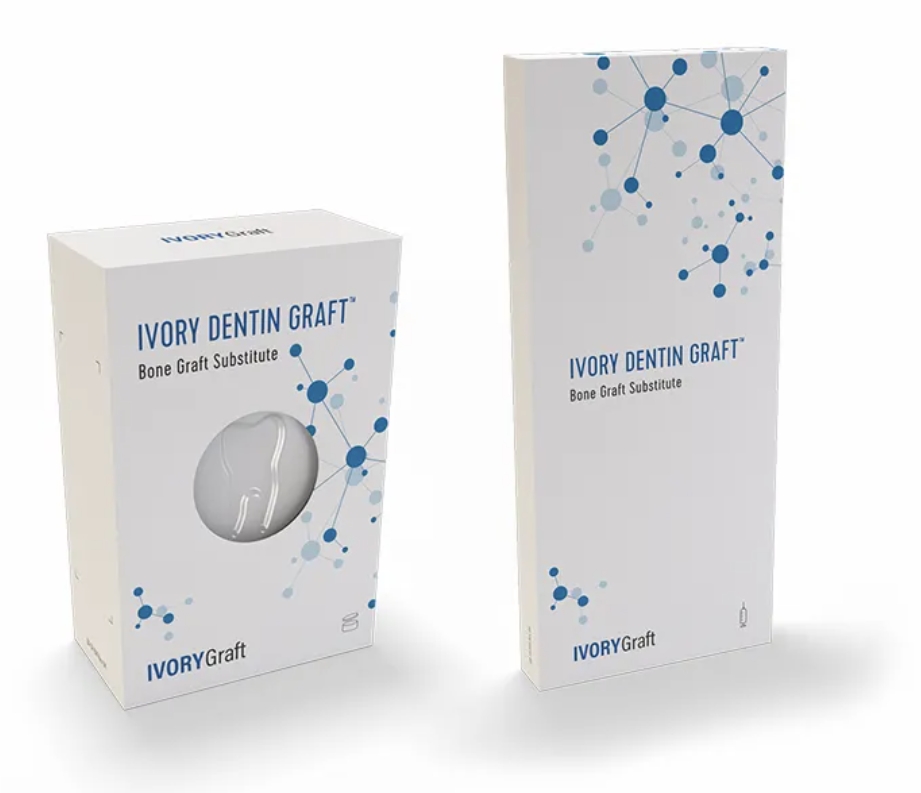
- What Was Done: Ivory Graft Ltd., an Israeli medical device company, focused on addressing the need for safe and efficient bone graft materials in dentistry. The company developed Ivory Dentin Graft™, a novel bone replacement biomaterial derived from porcine teeth. This product leverages the active organic matrix of dentin, allowing for progressive bone graft resorption and enabling guided bone regeneration (GBR) in preparation for dental implant placement. The dentin graft material undergoes a strictly controlled process to ensure safety and retain the natural form and protein matrix crucial for bone regeneration.
- Results/Impact: Clinical trials have demonstrated the superiority of Ivory Dentin Graft™ over traditional bone-derived graft materials. With a statistically significant increase in new bone formation (60.75% vs 42.81%), better bone-graft integration scores, and higher radiodensity of the bone at the graft site, Ivory Dentin Graft™ has proven its efficacy and safety. Titanium implant placement was successful in 95% of patients using the dentin graft material, compared to 81.25% for bone-derived grafts. These results mark Ivory Dentin Graft™ as a pioneering solution in dental bone grafting, making the benefits of dentin grafts accessible to all dentists and patients without the need for a separate surgical site to harvest bone tissue. Ivory Graft Ltd. has set a new standard in dental bone regeneration with the introduction of the first commercially available and CE-approved Dentin Xenograft.
- Company: Ivory Graft Ltd. (Established 2013)
Examples of Innovative Dentistry Practices and Products
- Teledentistry: This emerging field allows for remote dental consultations, expanding access to dental care, especially in underserved areas. It utilizes digital tools to assess patients' oral health remotely, offering convenience and extending the reach of dental professionals.
- Silver Diamine Fluoride (SDF): Approved by the FDA for use in the United States, SDF is a liquid substance used to halt the progression of cavities. It's a minimally invasive and cost-effective treatment that has gained popularity for managing tooth decay, especially in children and the elderly.
Emerging Trends and Future Dentistry Directions
- 3D Printing: Beyond clear aligners, 3D printing is being explored for creating custom dental prosthetics, including crowns, bridges, and even entire teeth, with materials that closely mimic natural tooth structure.
- Artificial Intelligence (AI): AI is beginning to play a role in diagnosing dental conditions from images and radiographs, with the potential to improve accuracy and predictability in treatments.
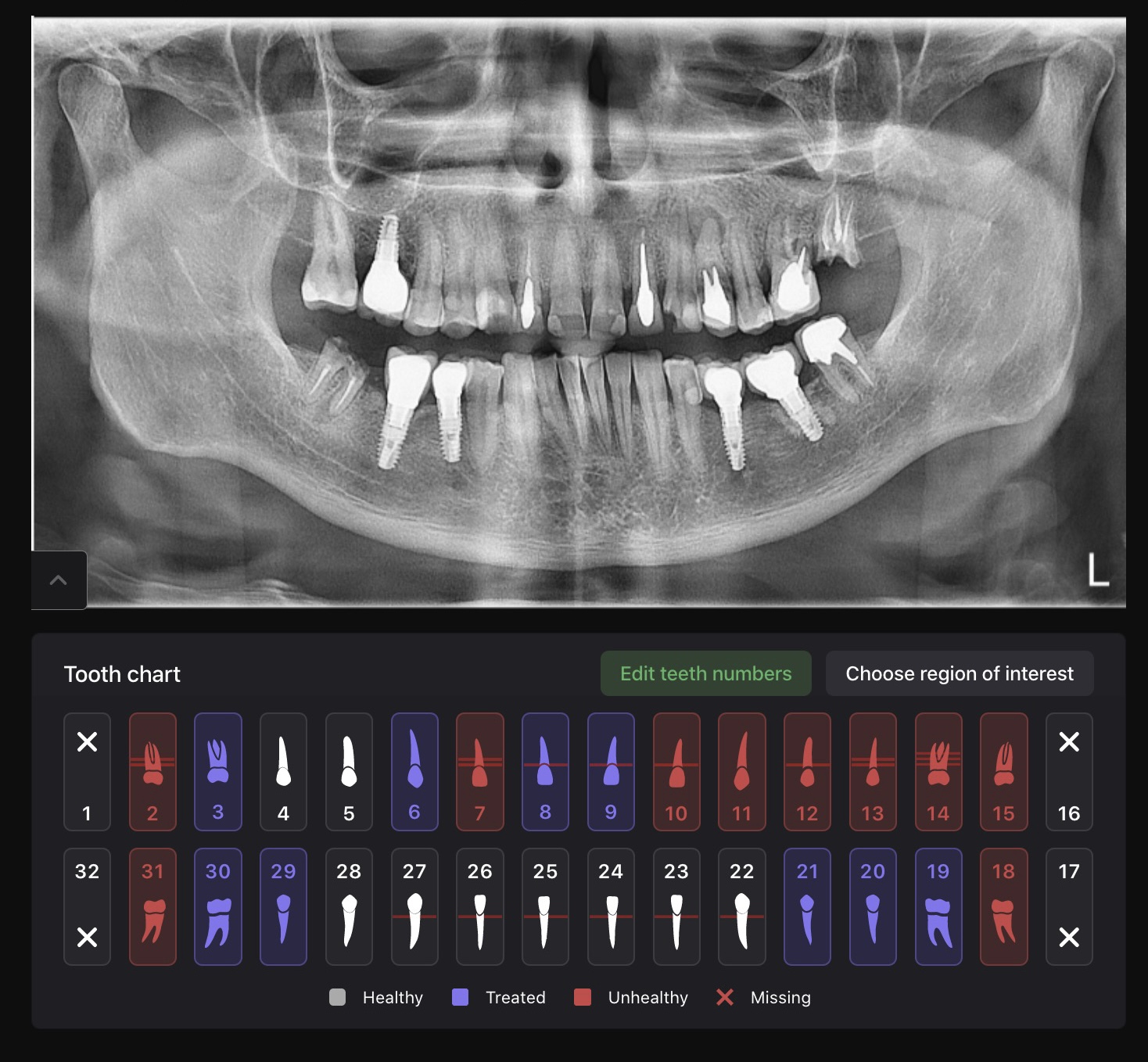 Case Study: DiagnoCat - Dental Diagnostics with AI
Case Study: DiagnoCat - Dental Diagnostics with AI- Company: DiagnoCat, USA and Russia (Launched in 2018)
- What Was Done: DiagnoCat introduced a groundbreaking AI-powered dental diagnostic tool designed to revolutionize the way dentists diagnose and plan treatments. Utilizing advanced machine learning algorithms, DiagnoCat analyzes dental X-rays and scans with unprecedented precision and speed. The system identifies a wide range of dental conditions, from cavities and gum disease to more complex issues like bone loss and impacted teeth, significantly improving the diagnostic process.
- Results/Impact: Since its launch, DiagnoCat has received CE and FDA approvals and has transformed dental diagnostics into practices where it has been adopted. Dentists report a significant increase in diagnostic accuracy and efficiency, leading to better patient outcomes and satisfaction, and to 150% growth in clinic revenues. The tool has also enabled practices to manage their workload more effectively, as immediate and accurate diagnostics free up valuable time for patient care. Furthermore, DiagnoCat has empowered dentists to communicate more effectively with their patients by providing visual evidence and explanations of dental issues, thus improving trust and understanding.
- Regenerative Dentistry: Research into stem cells and growth factors holds the promise of regenerating tooth tissue, potentially revolutionizing the way tooth decay and damage are treated.
The field of dentistry is at an exciting juncture, with technological innovations improving not only the patient’s experience but also the outcomes of dental treatments. As these technologies continue to evolve and become more integrated into practice, the future of dentistry looks to offer even more effective, efficient, and patient-friendly solutions.

Innovations in Insurance
The insurance industry has undergone significant transformation in recent years, driven by technological advancements, changing consumer expectations, and emerging risks. Innovative solutions have emerged to streamline processes, enhance customer experiences, and mitigate risks more effectively, reshaping the landscape of insurance services and operations.
Breakthroughs in Insurance Innovation
- Usage-Based Insurance: Utilizing telematics and IoT devices to monitor driving behavior and offer personalized insurance premiums based on individual risk profiles.
- Metromile: Offers pay-per-mile car insurance policies tailored to individual driving habits, promoting fairness and affordability.
- Metromile: Offers pay-per-mile car insurance policies tailored to individual driving habits, promoting fairness and affordability.
- Predictive Analytics: Leveraging big data and machine learning algorithms to assess risks, predict losses, and optimize underwriting and pricing strategies.
- Atidot: Provides predictive analytics solutions for life and health insurers, enabling data-driven decision-making and personalized customer experiences.
- Atidot: Provides predictive analytics solutions for life and health insurers, enabling data-driven decision-making and personalized customer experiences.
- Parametric Insurance: Offering predefined payouts based on specific triggers, such as natural disasters or adverse weather conditions, to expedite claims processing and provide financial protection.
- Swiss Re: Develops parametric insurance products that automatically trigger payouts in response to predefined events, offering rapid relief and liquidity to insured parties.
- Swiss Re: Develops parametric insurance products that automatically trigger payouts in response to predefined events, offering rapid relief and liquidity to insured parties.
- Microinsurance: Tailoring insurance products to meet the needs of underserved populations, such as low-income individuals and small businesses, through simplified policies and distribution channels.
- Bima: Delivers microinsurance products through mobile technology, reaching millions of uninsured individuals in emerging markets and providing financial security against unforeseen risks.
- Bima: Delivers microinsurance products through mobile technology, reaching millions of uninsured individuals in emerging markets and providing financial security against unforeseen risks.
- Blockchain Technology: Enhancing transparency, security, and efficiency in insurance transactions, claims processing, and fraud detection.
- B3i Services: Leveraging blockchain technology to streamline the exchange of data between insurance companies, brokers, and reinsurers, enhancing efficiency and transparency in the insurance industry.
- B3i Services: Leveraging blockchain technology to streamline the exchange of data between insurance companies, brokers, and reinsurers, enhancing efficiency and transparency in the insurance industry.
 Case Study:
Case Study:
Ethos Life's Streamlined Life Insurance
- Company: Ethos Life, San Francisco, USA (Founded in 2016)
- What Was Done: Ethos Life simplified the process of applying for life insurance using online data analytics and predictive modeling to provide instant quotes without medical exams or lengthy paperwork.
- Results/Impact: Ethos Life has made life insurance more accessible and convenient for a broader demographic, particularly attracting younger generations previously deterred by the complexity of traditional insurance buying processes.
Leaders in Insurance Innovation
- Oscar Health: Redefines health insurance with digital-first experiences, personalized plans, and transparent pricing, leveraging technology to simplify healthcare access and navigation.
- Hippo Insurance: Modernizes home insurance with AI-driven underwriting, smart home sensors, and proactive risk management, offering comprehensive coverage and peace of mind.
- Root Insurance: Disrupts the auto insurance industry with usage-based pricing, personalized policies, and fairer premiums based on individual driving behavior, promoting safer roads and responsible driving habits.
- Zego: Innovates in commercial insurance with flexible coverage options, real-time risk assessment, and digital platforms tailored to the needs of gig economy workers and small businesses.
- Lemonade: Transforms renters and homeowners’ insurance with AI-powered chatbots, instant claims processing, and transparent business models, reinventing insurance as a social good and charitable endeavor.
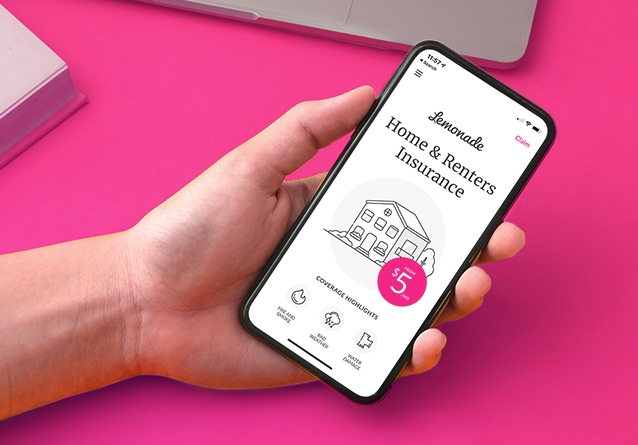 Case Study:
Case Study:
Lemonade 's AI-Driven Insurance Model- Company: Lemonade Insurance Company, New York, USA (Established in 2015)
- What Was Done: Lemonade has disrupted the traditional insurance industry by using artificial intelligence and behavioral economics to process claims and craft insurance policies for homeowners and renters.
- Results/Impact: Lemonade has significantly lowered processing times for claims from days to seconds and introduced a new business model where underwriting profits go to nonprofits. This transparent and customer-centric approach has increased trust and satisfaction among their customers.
How to Apply Insurance Innovation
- Embrace Digital Transformation: Invest in technology infrastructure, digital platforms, and data analytics capabilities to modernize operations and enhance customer experiences.
- Focus on Customer-Centricity: Prioritize customer needs, preferences, and feedback in product development, service delivery, and communication strategies to build trust and loyalty.
- Collaborate Across Ecosystems: Form strategic partnerships with Insurtech startups, technology providers, regulators, and industry stakeholders to drive innovation and address shared challenges.
- Experiment and Iterate: Foster a culture of experimentation, agility, and continuous improvement to test new ideas, learn from failures, and adapt to evolving market dynamics and consumer demands.
- Stay Ahead of Emerging Risks: Anticipate and proactively address emerging risks, such as cybersecurity threats, climate change, and regulatory changes, through risk management strategies, product innovation, and scenario planning.
- Direct-to-Consumer Approach: Leverage direct insurance models to eliminate intermediaries, offering insurance products and services directly to consumers through digital channels, enhancing transparency, reducing costs, and improving customer engagement.
Unique Characteristics of Insurance Innovation
- Risk Mitigation and Protection: Providing financial security, peace of mind, and resilience against unforeseen risks and losses through innovative insurance products and services.
- Adaptability and Flexibility: Responding to evolving customer needs, market trends, and regulatory requirements with agile, scalable, and customizable solutions that address complex risks and challenges.
- Transparency and Trust: Building trust and credibility with customers, partners, and regulators through transparent pricing, fair claims handling, and ethical business practices that prioritize integrity and accountability.
- Inclusive and Accessible: Expanding insurance coverage and accessibility to underserved populations, marginalized communities, and emerging markets through inclusive product design, distribution channels, and affordability initiatives.
- Value-Driven Innovation: Delivering value beyond traditional risk transfer by offering added services, benefits, and experiences that align with customer values, preferences, and lifestyles, fostering long-term relationships and brand loyalty.
What to Avoid When Innovating in Insurance
- Overlooking Regulatory Compliance: Ensure compliance with regulatory requirements, industry standards, and consumer protection laws to mitigate legal and reputational risks and build trust with stakeholders.
- Neglecting Data Privacy and Security: Safeguard sensitive customer information, proprietary data, and intellectual property from unauthorized access, breaches, or misuse through robust cybersecurity measures and data protection protocols.
- Losing Sight of Customer Needs: Keep customer needs, preferences, and experiences at the forefront of innovation efforts, avoiding technology-driven solutions or cost-cutting measures that compromise service quality, satisfaction, or trust.
- Ignoring Ethical Implications: Consider the ethical implications and societal impacts of insurance products, pricing algorithms, and claims decisions to avoid discrimination, bias, or unfair treatment of policyholders and beneficiaries.
- Underestimating Market Disruption: Anticipate and prepare for disruptive forces, competitive threats, and industry convergence from Insurtech startups, nontraditional competitors, and technological innovations that reshape the insurance landscape.
Insurance innovation represents a paradigm shift in the way risks are managed, products are designed, and services are delivered within the industry. By embracing technology, customer-centricity, collaboration, experimentation, and responsible business practices, insurers can unlock new opportunities for growth, differentiation, and societal impact in an increasingly complex and dynamic risk landscape.

Innovations at Aetna
Aetna, a leading health care benefits company, has been at the forefront of innovation within the health insurance industry. Through a blend of technology, data analytics, and customer-focused services, Aetna has consistently aimed to improve health care outcomes, enhance patient experiences, and reduce costs. Their commitment to innovation is evident in several key initiatives and strategies that have set them apart in the competitive health care landscape.
Strategic Innovations by Aetna
- Digital Health Records and Telehealth Services: Aetna has invested in digital platforms that provide patients with easy access to their health records and enable virtual health consultations. This approach not only improves convenience for patients but also facilitates timely medical advice, which is particularly crucial in remote or underserved areas.

- Personalized Health Care Plans: Leveraging big data and analytics, Aetna offers personalized health care plans tailored to individual health profiles and needs. This data-driven approach ensures that members receive the most relevant and effective care, potentially improving health outcomes and member satisfaction.
- Wellness and Preventive Programs: Aetna's focus on preventive care is exemplified in its wellness programs, which encourage healthy lifestyles among its members. Programs like the "Aetna Foundation’s Healthier World Innovation Challenge" support community-based projects aimed at addressing social determinants of health, showcasing Aetna's commitment to holistic health.
- Partnerships for Innovation: Aetna has formed strategic partnerships with tech companies and health care providers to integrate innovative solutions into their services. For instance, their collaboration with Apple led to the development of health apps that sync with the Apple Watch, encouraging physical activity and health monitoring among users.
- Investment in Mental Health Services: Recognizing the critical importance of mental health, Aetna has expanded its services to include digital mental health solutions. These include online counseling and mental health apps, which aim to make mental health support more accessible and reduce the stigma associated with seeking help.
Impact of Aetna's Innovation Efforts
- Improved Patient Engagement: By providing tools and resources that empower patients to take an active role in their health care, Aetna has seen increased engagement and satisfaction among its members.
- Enhanced Health Outcomes: Through personalized care plans and preventive programs, Aetna has contributed to better health outcomes, evidenced by reduced hospital readmissions and improved management of chronic conditions among its members.
- Enhanced Health Outcomes: Through personalized care plans and preventive programs, Aetna has contributed to better health outcomes, evidenced by reduced hospital readmissions and improved management of chronic conditions among its members.
Aetna's commitment to innovation demonstrates how health care companies can leverage technology and data to improve service delivery and health outcomes. As the health care industry continues to evolve, Aetna's forward-thinking strategies position it as a leader in shaping the future of health insurance and care.
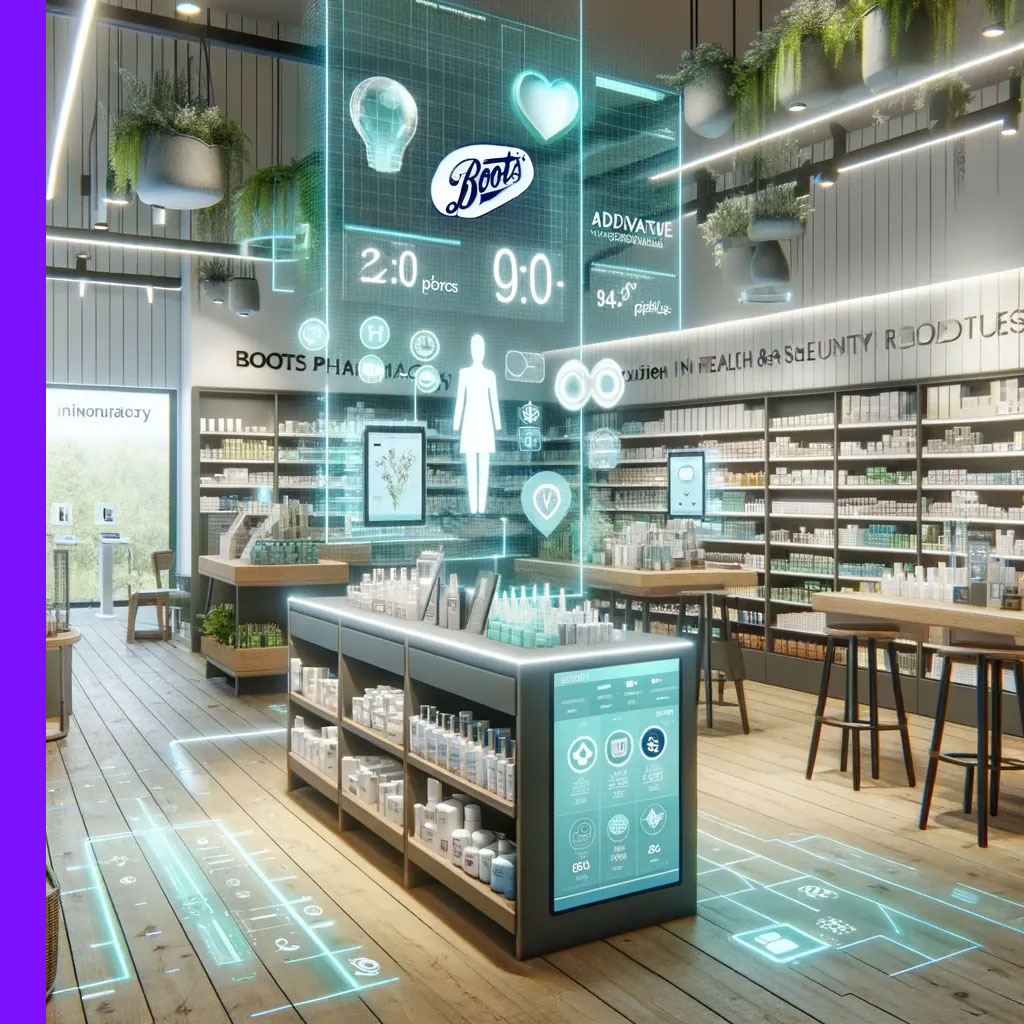
Innovations at Boots
Boots, a leading health and beauty retailer and pharmacy chain in the UK, has a long-standing reputation for innovation in the healthcare and cosmetics industries. With a history that spans over 170 years, Boots has consistently leveraged technology and scientific research to develop products and services that meet the evolving needs of its customers.
Pioneering Health and Beauty Innovations by Boots
- Pharmaceutical Advances: Boots has a rich history of pharmaceutical innovation, including the development of the pain-relieving drug Ibuprofen, which was made available to the public in the 1960s. This breakthrough showcased Boots' commitment to scientific research in healthcare.
 Beauty and Skincare: The Boots No7 brand is renowned for its anti-aging beauty products, developed through rigorous scientific research. One of the brand's most significant innovations was the introduction of the No7 Protect & Perfect Intense Advanced Serum, which became a sensation after independent studies demonstrated its effectiveness in reducing wrinkles.
Beauty and Skincare: The Boots No7 brand is renowned for its anti-aging beauty products, developed through rigorous scientific research. One of the brand's most significant innovations was the introduction of the No7 Protect & Perfect Intense Advanced Serum, which became a sensation after independent studies demonstrated its effectiveness in reducing wrinkles.- Digital Health Services: Embracing the digital transformation, Boots has introduced various online services to improve customer access to healthcare. This includes online pharmacy services, virtual GP consultations, and digital appointment bookings, making healthcare more accessible and convenient for consumers.
- Sustainable Practices: Recognizing the importance of sustainability, Boots has innovated in product packaging and formulations. The company has launched initiatives to reduce plastic use across its product ranges and introduced refill stations in stores for popular products, reducing waste and encouraging reuse among consumers.
- Personalized Healthcare: Boots is at the forefront of offering personalized health and beauty services. This includes in-store skin analysis, bespoke skincare consultations, and personalized medication management services, ensuring that customers receive tailored advice and products suited to their individual needs.
Impact of Boots' Innovation Efforts
- Enhanced Customer Experience: Boots' investment in digital and personalized services has significantly enhanced the shopping and healthcare experience for customers, offering convenience, accessibility, and customization.
- Leadership in Skincare Science: Through its commitment to research and development, Boots has established itself as a leader in anti-aging skincare, with products that are backed by scientific evidence and trusted by consumers worldwide.
- Contribution to Sustainability: Boots' initiatives in reducing plastic waste and promoting refillable products demonstrate the brand's dedication to environmental sustainability, setting a standard for the retail industry.
Boots' approach to innovation exemplifies how a company can evolve with the times while staying true to its core values of customer care, quality, and accessibility. By integrating technology, embracing sustainability, and continuing to invest in health and beauty research, Boots is well-positioned to meet the future needs of its customers, leading the way in the health and beauty retail sector.
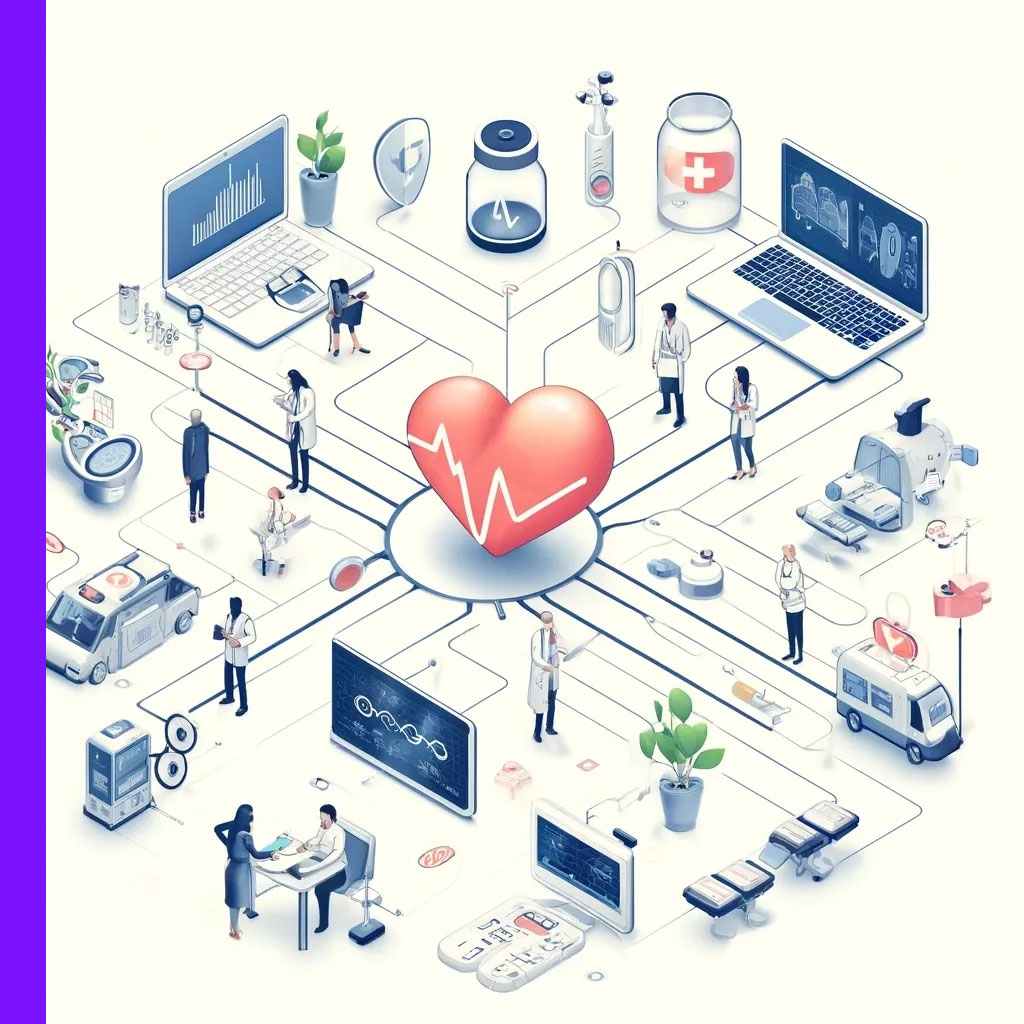
Innovations in Health
The field of health innovation continuously evolves to meet the challenges of medical care delivery, disease prevention, and health management. These innovations often reflect a blend of technological advancements, new medical discoveries, and evolving patient care methodologies. As healthcare demands become more complex, the impetus for innovative solutions becomes even more critical, fueling a dynamic environment of continuous improvement and life-saving breakthroughs.
Breakthroughs in Healthcare
- Telemedicine Platforms: Offering remote consultations and medical services.
- Amwell provides virtual doctor visits and telehealth services for patients.
- Amwell provides virtual doctor visits and telehealth services for patients.
- Wearable Health Monitors: Tracking vital signs and patient health data in real time.
- Apple Watch Health monitors heart rate, activity levels, and other health metrics.
- Apple Watch Health monitors heart rate, activity levels, and other health metrics.
- Precision Medicine: Tailoring treatment strategies to individual genetic profiles.
- Verily Life Sciences develops tools for personalized medicine and disease prevention.
- Verily Life Sciences develops tools for personalized medicine and disease prevention.
- Biodegradable Implants: Reducing the need for additional surgeries and complications.
- Ametek Advanced Medical Technologies creates biodegradable implants for orthopedic and cardiovascular procedures.
- Ametek Advanced Medical Technologies creates biodegradable implants for orthopedic and cardiovascular procedures.
- Healthcare AI: Enhancing diagnostic accuracy and predictive analytics.
- Watson Health by IBM uses artificial intelligence to analyze medical data and assist healthcare professionals in making informed decisions.
- Watson Health by IBM uses artificial intelligence to analyze medical data and assist healthcare professionals in making informed decisions.
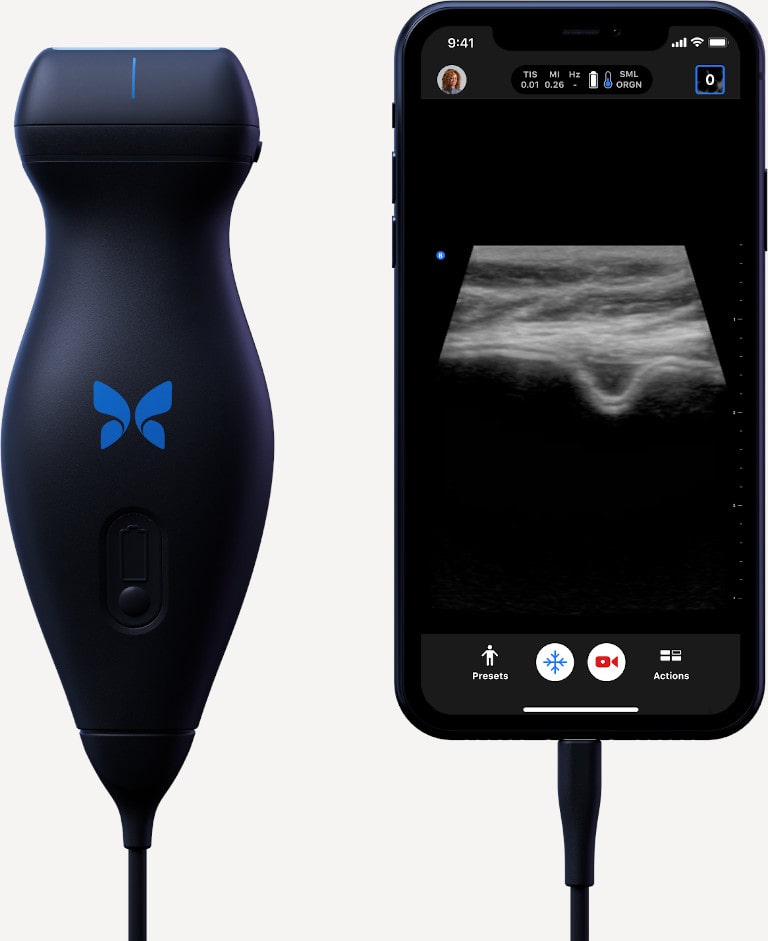 Case Study: Butterfly Network's Mobile Ultrasound
Case Study: Butterfly Network's Mobile Ultrasound
- Company: Butterfly Network, Guilford, USA (First product release in 2018)
- What Was Done: Butterfly Network created the Butterfly iQ, the first handheld, single-probe whole-body ultrasound system that connects to a smartphone. This innovation has made ultrasound technology more accessible and affordable.
- Results/Impact: The Butterfly iQ has been adopted in numerous countries, particularly benefiting remote and low-resource settings where traditional ultrasound machines are not available. It has transformed point-of-care diagnostics and has potential for significant global health impact.
Leaders in Health Innovation
- Fitbit: Pioneered wearable technology for personal health monitoring.
- 23andMe: Made genetic testing accessible and consumer-friendly.
- Intuitive Surgical: Developed robotic systems for minimally invasive surgery.
- Philips Healthcare: Innovates in diagnostic imaging and patient monitoring.
- Regeneron Pharmaceuticals: Focuses on genetic-driven drug discovery and development.
 Case Study: Fitbit for Remote Patient Monitoring
Case Study: Fitbit for Remote Patient Monitoring
- Company: Fitbit Inc., San Francisco, USA (Launched Fitbit Care in 2018)
- What Was Done: Fitbit launched Fitbit Care, a connected health platform for health plans, employers, and health systems. It combines health coaching & virtual care through wearable devices that monitor users' activity, sleep, and heart rate.
- Results/Impact: Fitbit Care has been integrated into wellness programs and chronic disease management plans, enabling remote patient monitoring, improving health outcomes, and reducing healthcare costs through early intervention.
How to Apply Health Innovation
- Collaborate with Medical Practitioners: Ensure practical applicability of health technologies.
- Engage in Patient-Centric Design: Consider the patient’s experience in product development.
- Adopt Data Security Measures: Prioritize patient data privacy and security in health tech.
- Conduct Clinical Trials: Validate the efficacy and safety of new medical inventions.
- Integrate Multidisciplinary Approaches: Combine tech, design, and healthcare expertise.
Unique Characteristics of Health Innovation
- Patient Safety and Efficacy: Fundamental priorities in health technology development.
- Regulatory Compliance: Meeting stringent standards set by health authorities.
- Scalability and Accessibility: Broadening the reach of health solutions.
- Interoperability in Healthcare Systems: Ensuring seamless data exchange and communication.
- Sustainability in Healthcare: Developing long-term solutions without compromising environmental resources.
What to Avoid When Inventing Health Solutions
- Overlooking User-Friendly Design: Health products should be intuitive and easy to use.
- Ignoring Evidence-Based Practices: Rely on clinical evidence for health innovation.
- Neglecting Patient Privacy: Uphold confidentiality in health data handling.
- Underestimating Implementation Challenges: Anticipate and plan for real-world deployment obstacles.
- Disregarding Ongoing Maintenance: Plan for long-term support and updates of health tech products.
Health innovations signify a dedication to enhancing the quality of care and promoting better health outcomes across populations. They embody a synergy of technology, patient care, and scientific research, propelling us toward a future where healthcare is more effective, personalized, and accessible.
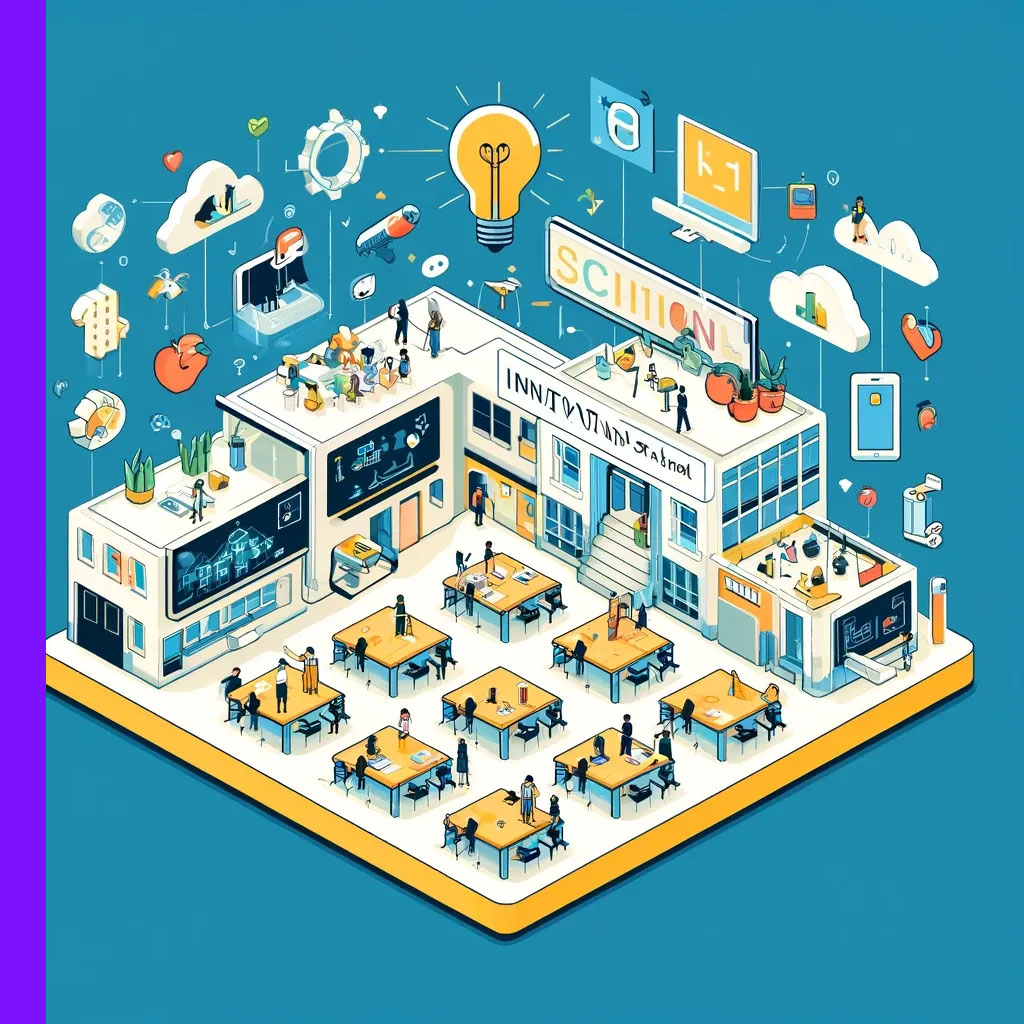
Innovations at School
Innovations at school have transformed education, adapting to technological advancements and changing societal needs.
Breakthroughs at School
- E-Learning Platforms: Facilitating remote and blended learning environments.
- Khan Academy provides a free, world-class education for anyone, anywhere.
- Khan Academy provides a free, world-class education for anyone, anywhere.
- Interactive Whiteboards: Enriching classroom engagement and learning activities.
- SMART Boards offer touch-sensitive screens that work with a projector and a computer.
- SMART Boards offer touch-sensitive screens that work with a projector and a computer.
- STEM Education Tools: Encouraging hands-on learning in science, technology, engineering, and mathematics.
- LEGO Education supplies resources for hands-on STEM learning that engages students.
- LEGO Education supplies resources for hands-on STEM learning that engages students.
- Language Learning Applications: Assisting in new language acquisition through interactive apps.
- Duolingo utilizes gamification to make language learning accessible and effective.
- Duolingo utilizes gamification to make language learning accessible and effective.
- Virtual and Augmented Reality: Providing immersive learning experiences for students.
- Google Expeditions allows teachers to take students on virtual field trips.
- Google Expeditions allows teachers to take students on virtual field trips.
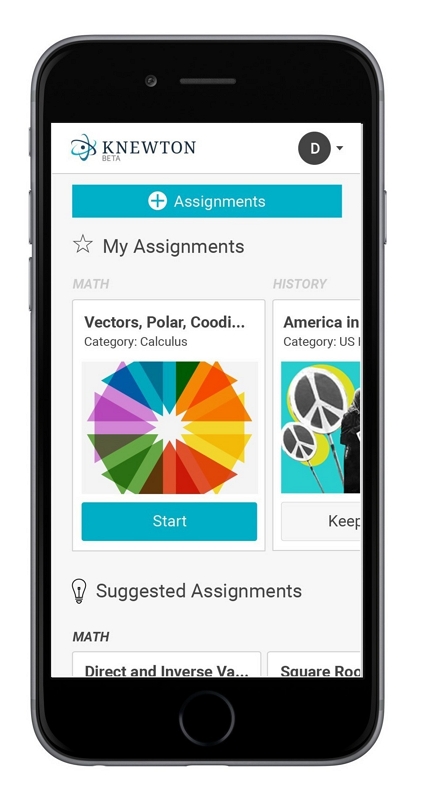 Case Study: Knewton's Adaptive Learning Technology
Case Study: Knewton's Adaptive Learning Technology
- Company: Knewton, New York, USA (Founded in 2008)
- What Was Done: Knewton developed an adaptive learning platform using artificial intelligence to personalize educational content for students. It analyzes students' performance to tailor the learning experience to their individual needs.
- Results/Impact: Knewton's technology has been utilized in schools and educational institutions to support differentiated instruction and has shown to improve learning outcomes by addressing the unique strengths and weaknesses of each student.
Leaders in School Innovation
- Apple: Integrates technology in classrooms with iPads and educational apps.
- Coursera: Partners with universities to bring courses and degrees online.
- Google for Education: Provides a suite of tools that foster collaboration and creativity.
- Microsoft Education: Offers learning tools with a focus on inclusivity and accessibility.
- edX: Collaborates with universities to offer online courses from top institutions.
Case Study: Google Classroom’s Impact on Digital Learning
- Company: Google LLC, Mountain View, USA
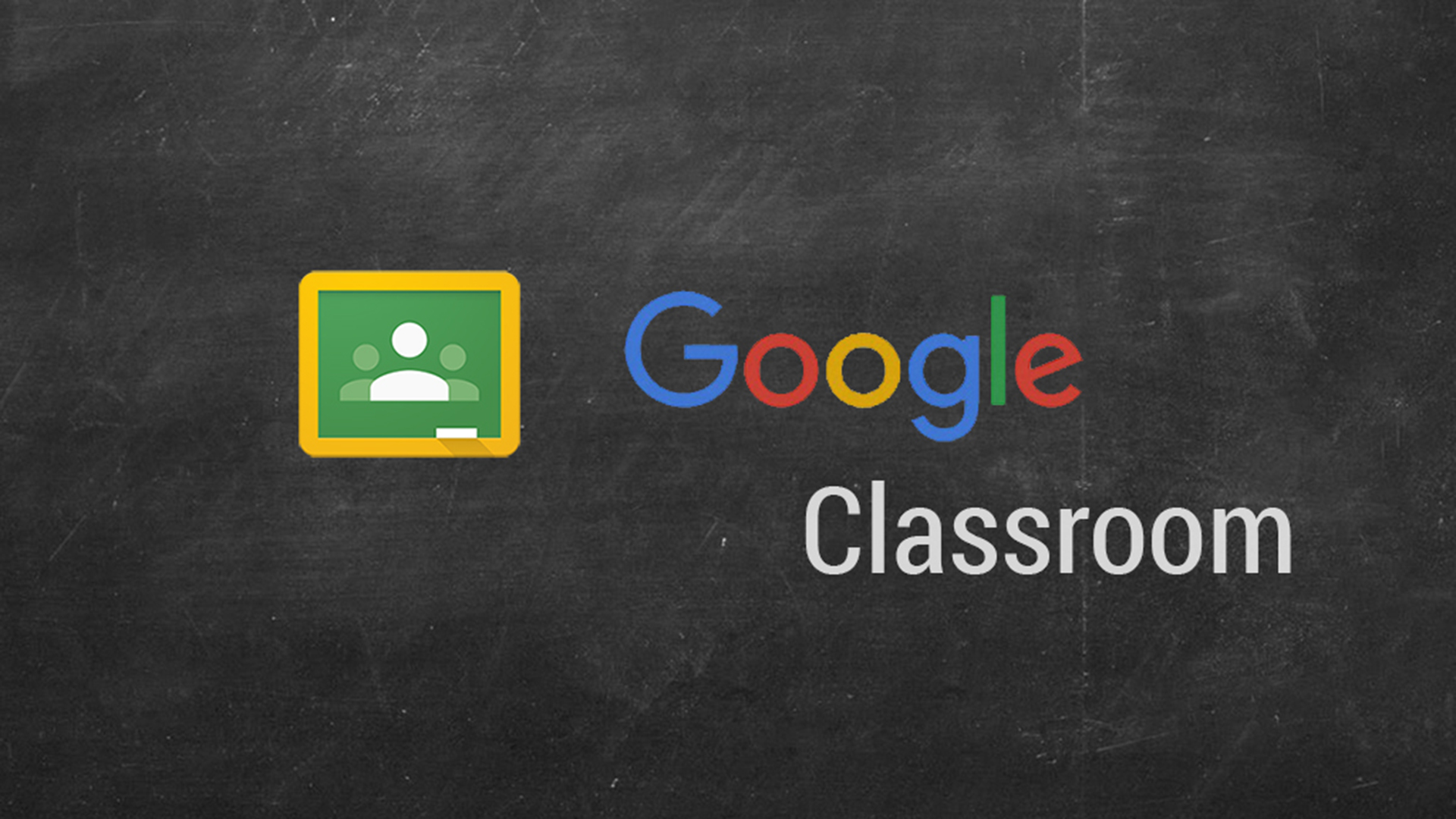
- Product: Google Classroom (Introduced in 2014)
- What Was Done: Google introduced Classroom, a free web service for schools that aims to simplify creating, distributing, and grading assignments in a paperless way. It is part of the Google for Education suite.
- Results/Impact: Google Classroom has been widely adopted and became especially critical during the COVID-19 pandemic, enabling remote learning for millions of students and teachers, promoting continuity of education in unprecedented circumstances.
How to Apply School Innovation
- Personalized Learning: Customizing teaching approaches to accommodate individual student needs.
- Collaborative Learning Environments: Encouraging teamwork through tech-based platforms.
- Gamification: Applying game design elements to learning to increase engagement.
- Digital Literacy Programs: Teaching students’ essential digital skills for the future.
- Sustainable Practices: Incorporating eco-friendly initiatives into school operations.
Unique Characteristics of School Innovation
- Accessibility: Designing educational tools that are universally accessible.
- User Engagement: Creating captivating content to maintain student interest.
- Feedback Mechanisms: Providing real-time feedback to support learning progress.
- Inclusivity: Ensuring resources cater to diverse learning styles and abilities.
- Continuous Adaptation: Updating educational content to keep pace with new knowledge.
What to Avoid When Implementing School Innovations
- One-size-fits-all Solutions: Recognize the diverse needs and abilities of students.
- Technological Overload: Balance tech use with traditional educational methods.
- Ignoring Teacher Training: Educators should be well-equipped to use new tools.
- Underestimating Costs: Plan for long-term financial sustainability of tech initiatives.
- Neglecting Data Privacy: Protect student information in all tech applications.
These innovations in education are vital for equipping future generations with the skills and knowledge to thrive in a rapidly changing world. Schools that embrace these changes are setting their students up for success, fostering a lifelong love of learning and adaptation.
Innovation Articles
- Innovation overview
- Innovation management
- Innovation methods
- Innovation tools
- Innovation and creativity
- Innovation and other disciplines
- Innovation in organizations
- Innovation career
- Innovation importance
- Innovation goals
- Innovation values
- Inspiration for innovation
- Innovation education
- Product innovation
- Service innovation
- Technological innovation
- Innovation examples
- Innovations across various industries
- Innovation glossary (200 terms)





